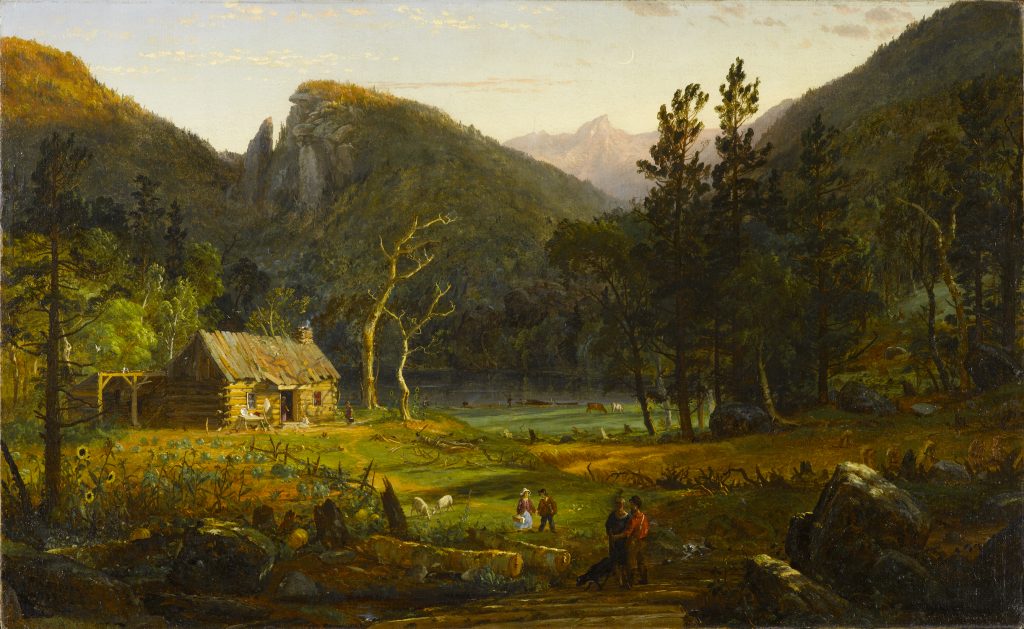Activity Idea: Eagle Cliff, Franconia Notch, New Hampshire (Quick Tip)
Use the following strategies with Jasper Francis Cropsey’s Eagle Cliff, Franconia Notch, New Hampshire
- Food Sources [science, social studies]
What kinds of food are these settlers growing? What are some other sources of food they might find in this area? Consider the differences between the way these settlers obtain food and the way we obtain food. Do you grow any type of food at your home? Plant some pumpkin or lettuce seeds and chart their growth. After you harvest the vegetables, go back to the painting and reconsider the settlers’ dependence on the land and how it feels to wait for food to mature.
- Children’s Chores [social studies]
Consider the activities of the children in the painting. What kinds of duties do you think these children were given? How do you contribute to your family’s daily responsibilities? How is their life different from yours? List these differences in chart form. Consider why children’s responsibilities have changed over time.
- The White Mountains [science]
Look closely at the painting and list the physical features of this area of the White Mountains. Visit the following websites: http://https://www.nhstateparks.org/visit/state-parks/franconia-notch-state-park.aspx and http://www.fs.fed.us/r9/white/ . Compare photographs of the region today with Cropsey’s painting. Consider how civilization has impacted the area in positive and negative ways. Predict how this area might look in another hundred years.
- The Hudson River School [art, language arts]
Read excerpts from Cole’s Essay on American Scenery . Compare his words with his painting Romantic Landscape. What do these works tell you about this artist and the fundamental principles of Hudson River School? Write a motto for this art movement based on these principles.
- Natural Preservation [science, art]
Hudson River School paintings promoted the preservation of America’s natural resources. Compare Cropsey’s painting with works by Ansel Adams, a photographer who also loved our land. (For more information on this artist, visit http://anseladams.com/about-ansel-adams/ansel-adams-biography/ .) How do both of these artists promote natural preservation?
- Land as Symbol [art, language arts, social studies]
Discuss how the land is a symbol of America’s prosperity. Define the term Manifest Destiny and consider the way this painting supports that view.

